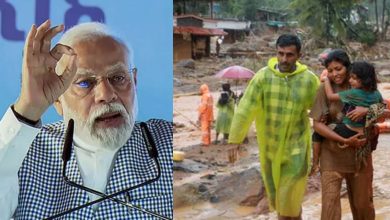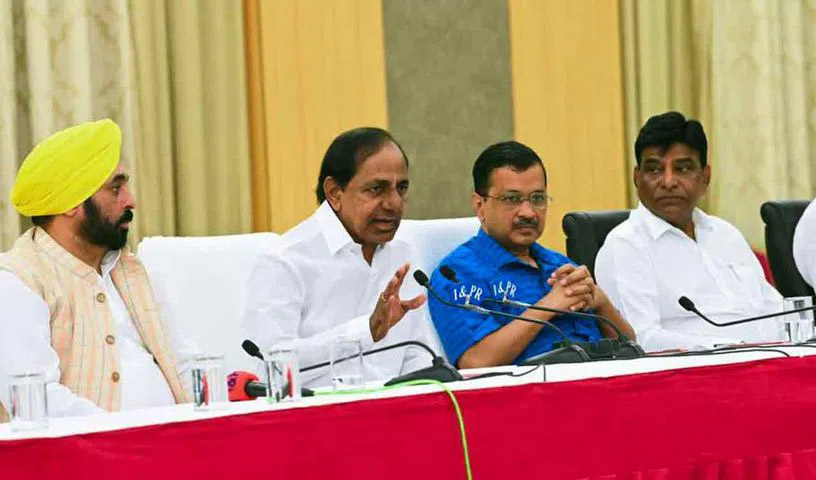What is the meaning of Waqf? When did it start in India

History is linked to Mohammad Ghori and Qutubuddin Aibak
Anjani Kumar, Senior Journalist
On Wednesday, amidst all the opposition, Parliamentary Affairs and Minority Welfare Minister Kiren Rijiju introduced the Waqf Board Amendment Bill in the Lok Sabha. Earlier, the Parliamentary Committee, in which about 14 amendments were accepted by the JPC headed by Jagdambika Pal. The amended bill was already approved by the Cabinet.
Here it also becomes necessary to know when did Waqf make its debut in India
So, Waqf can be considered to have arrived in India with the arrival of Islam in India, although history is not very clear about it as to in which period it tells its beginning.
In such a situation, it is also difficult for history to decide who would have been the ‘first ruler’ to formally implement Waqf. This question is exactly like trying to know when Waqf started. ..
Amidst all the opposition, Parliamentary Affairs and Minority Welfare Minister Kiren Rijiju introduced the Waqf Board Amendment Bill in the Lok Sabha. Earlier, a total of 44 amendments were accepted by the Parliamentary Committee (JPC) headed by Jagadambika Pal. You all know that if suitable answers are found to some important questions related to the Waqf Board, then they can take us on a journey to the history of Waqf.
Waqf is a word derived from the Arabic language, which originated from the word ‘Wakufa’
..What is Waqf? It becomes necessary to know this here. So Waqf is a word derived from the Arabic language, which originated from the word ‘Wakufa’. Wakufa means to stop, to stop. Waqf is formed from this, which means the property that is for public welfare. This is a kind of ‘donation’ and the donor can donate movable or immovable property. Whatever is donated for public welfare, its preservation is Waqf. Now it does not only include house, farm, land, ground, but also fan, cooler, bicycle, TV-fridge.
The condition is that it should be donated for the purpose of public welfare. The donor who gives this donation is called ‘Waqif’. Waqif can also decide how the donation or the income from it will be used.
If a donor (Waqif) says that the income from his donation will be spent only for orphan children, then this will be done.
Another story related to Waqf in Islam
There is a story related to Waqf. It is said that once Caliph Umar acquired a piece of land in Khaiber and asked Prophet Muhammad (peace be upon him) how it could be best used? The Prophet said, “Stop this property, tie it up and use the benefits of it for the people. Spend on their needs. It should not be sold, gifted or inherited. In this way that land was made a Waqf.
Waqf Board: One such incident from the time of Prophet Muhammad
One such incident from the time of Prophet Muhammad comes to light, when a garden of 600 date palm trees was made a Waqf and the income from it was used to help the poor people of Medina. One such incident from the time of Prophet Muhammad comes to light, when a garden of 600 date palm trees was made a Waqf and the income from it was used to help the poor people of Medina. This is one of the earliest examples of Waqf. Similarly, there is a very old Al Azhar University in Cairo, the capital of Egypt, which is considered the best for the study of Arabic culture and language. It was built in the 10th century and is also a Waqf.
When did Waqf come to India?
Waqf can be considered to have come to India with the arrival of Islam in India, although history is not very clear about which period it started. In such a situation, it is difficult for history to decide who would have been the ‘first ruler’ to formally implement Waqf. This question is exactly like trying to know ‘how did the tradition of donation start.’
The beginning can be considered from Mohammad Ghori
However, one fact is that the Waqf property started with the donation of just two villages. These two villages are connected to Mohammad Ghori. After winning from Prithviraj Chauhan at the end of the 12th century, Mohammad Ghori tried to strengthen his power by increasing military strength and Islamic institutions. Mohammad Ghori donated two villages for the Jama Masjid of Multan for the education and worship of Muslims. It is considered to be one of the first examples of Waqf in India.
It is also said that after the Indian Railways and the Indian Army, the Waqf Board is the third largest landholder in India. It started in Multan in Punjab of undivided India in the late 12th century, and spread during the reign of the Sultans who ruled in Delhi.
Waqf was part of the Islamic tradition and it gradually came into vogue during the reign of Muslim rulers in India.
Waqf was part of the Islamic tradition. And it gradually came into vogue during the reign of Muslim rulers in India. Now if we travel backwards with the wheel of time, we find that when Arab traders set foot in South India (especially the Malabar region) with Islam in the 7th century, ‘Waqf’ also set foot on Indian soil on their shoulders, but if we talk about implementing it at the government level, then the first mention can be given to the rulers of the Delhi Sultanate. The Delhi Sultanate started in the 13th century.





